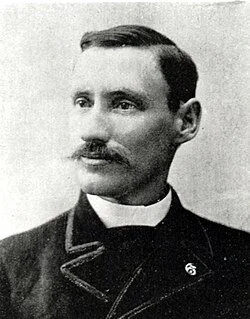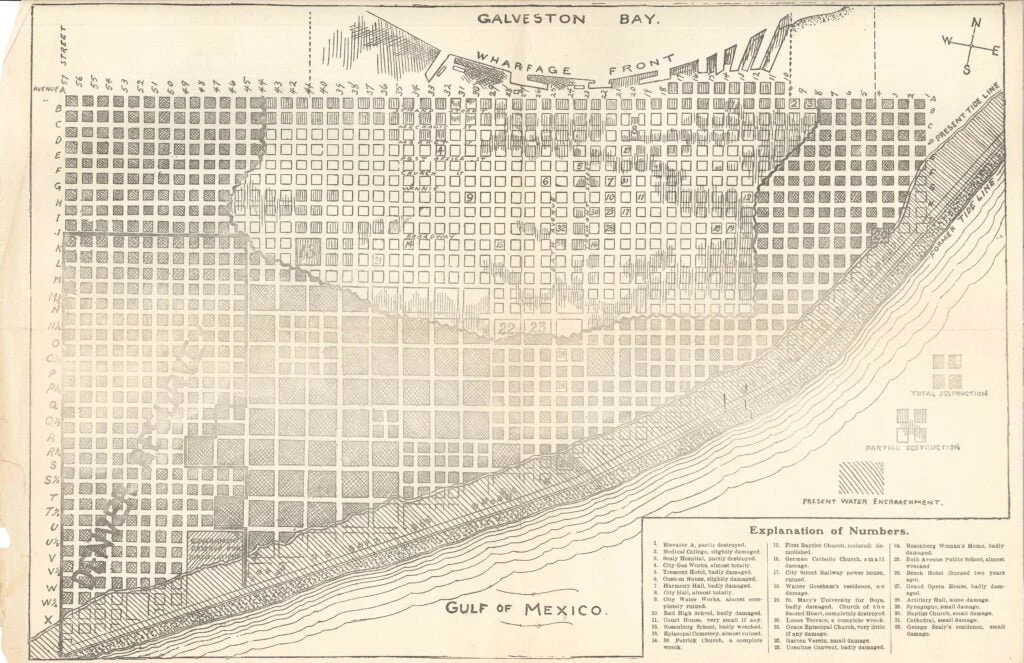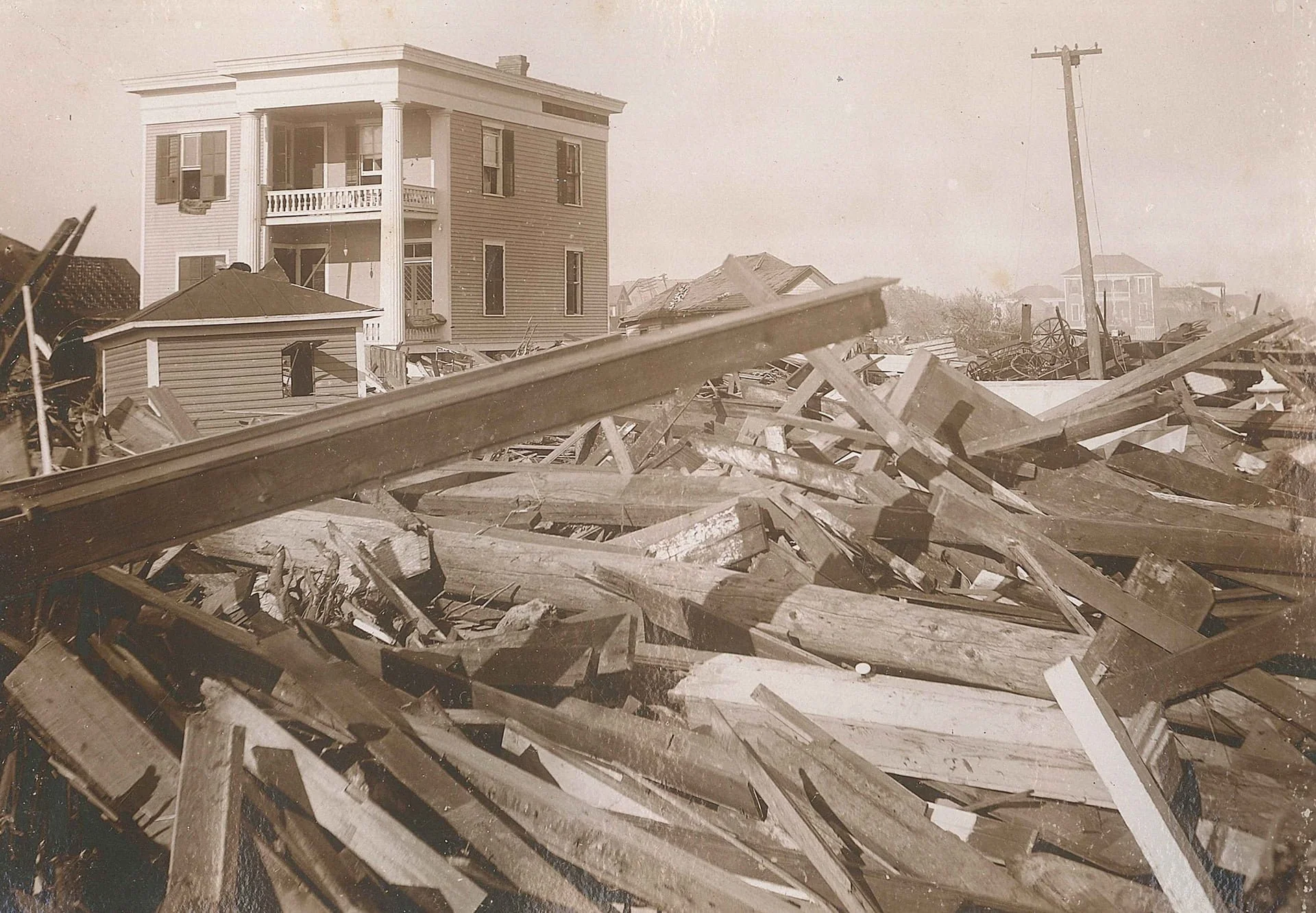The 1900 Galveston Hurricane: America’s Deadliest Natural Disaster and the Birth of Modern Forecasting
This article, about “The 1900 Storm,” was written and contributed by Will Wright, Chief Creative Officer of the Galveston Historical Foundation. Images used are property of the Galveston Historical Foundation and are used here with permission.
A City on the Rise Before the Storm
Known today as "The 1900 Storm," the hurricane that struck Galveston Island on September 8, 1900, remains the deadliest natural disaster in United States history, claiming more than an estimated 6,000. Over a century later, the storm is remembered not only for its catastrophic human toll and devastation, but also for how it reshaped the science of meteorology and forever altered the way we prepare for hurricanes.
At the turn of the 20th century, Galveston was a thriving port city—Texas's largest at the time—with grand architecture, bustling shipping docks, and a reputation as the "Wall Street of the Southwest." The storm originated as a tropical disturbance off the coast of Africa in late August and gradually intensified as it crossed the Atlantic. It entered the Gulf of Mexico as a full-fledged hurricane, yet due to limited forecasting tools and a fractured communication system—particularly between U.S. and Cuban meteorologists—its threat was misunderstood and underestimated.
Warnings Ignored and Forecasts Dismissed
Meteorologist
Issac Cline
Cuban meteorologists had predicted a powerful storm heading toward the Gulf Coast. However, their warnings were dismissed by the U.S. Weather Bureau, which still held to an older forecast of a northeasterly curve toward Florida. As the hurricane approached Texas, Weather Bureau forecaster Isaac Cline, stationed in Galveston, began to suspect a serious storm was imminent. On the morning of September 8, he issued a warning and personally rode through the city urging residents to take shelter.
Landfall: Galveston Engulfed by the Sea
The hurricane made landfall with estimated sustained winds of over 130 miles per hour and storm surges reaching more than 15 feet, higher than most of the island itself. Galveston, essentially sitting atop a sandbar, was swallowed by the sea. Entire neighborhoods were swept away. Houses collapsed. Debris and floodwaters churned together to create a deadly torrent that crushed anything in its path. The wind, rain, and surge obliterated the island's infrastructure. Telegraph lines were severed, leaving Galveston cut off from the mainland and the outside world for days. Survivors described the water as rising not in waves but in one massive, rolling wall.
Damage map of Galveston, Texas, after the 1900 hurricane courtesy of Galveston Historical Foundation
Aftermath: Death, Ruin, and a City Cut Off
In the aftermath, Galveston was a landscape of ruin. The island was covered in debris, death, and wreckage. Recovery was slow. Beyond its destruction, the 1900 Storm prompted a revolution in how weather is tracked and communicated. The U.S. Weather Bureau, later renamed the National Weather Service, revamped its forecasting operations in the wake of the storm's failure. The tragedy exposed the dangers of centralized control over forecasts, highlighted the importance of international cooperation, and underscored the need for faster and clearer communication to the public. In the decades following the storm, the development of radar, satellite imagery, and aircraft reconnaissance would transform hurricane forecasting into the science it is today.
Images Courtesy of the Galveston Historical Foundation
Engineering Marvels Born from Tragedy
The disaster also catalyzed engineering feats, such as the construction of a massive seawall and a citywide grade-raising project, which involved lifting entire buildings to elevate the island above storm surge levels. To date, the raising of Galveston remains the largest civil engineering project in U.S. history and has been a tested barrier to numerous storms and hurricanes since.
A Lasting Lesson in Resilience and Science
The 1900 Storm was a grim masterclass in meteorology—one that came at the highest possible cost. It catalyzed the modernization of forecasting, the establishment of preventive infrastructure, and the deeper study of atmospheric behavior in the Gulf of Mexico and the Atlantic Basin.
In Galveston, the memory is never far. And each hurricane season, as warm Gulf waters begin to simmer with potential, the legacy of that devastating storm continues to inform both science and community resilience.
A Word from the CAT5Prep.com Team
We’d like to extend our sincere thanks to Will Wright, Chief Creative Officer at the Galveston Historical Foundation, for sharing this powerful and enduring story of The 1900 Storm. The legacy of Galveston’s resilience is not only a vital piece of American history — it’s a reminder of how far we’ve come in storm preparedness, forecasting, and community strength.
We encourage our readers to learn more by exploring the work of the Galveston Historical Foundation and visiting their official archives and exhibits — both online and in person — to experience the history firsthand.
From all of us at CAT5Prep.com, thank you for keeping the story alive.















